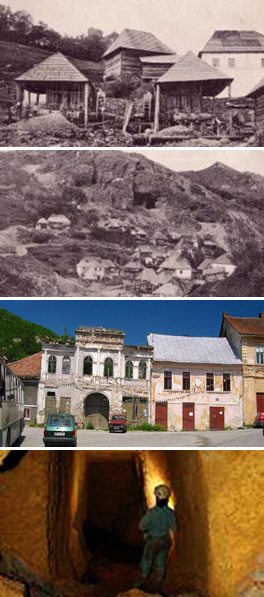The Rosia Montana deposit is one of the oldest mining sites in the world, with a history stretching back some 2000 years. There have been four principal mining periods prior to Gabriel’s involvement:
- Roman conquest period (106 - end of the 3rd century)
- Austrian-Hungarian Empire conquest (from the end of the 17th century until 1918)
- The period between the two World Wars (1918 - 1939)
- Communist era and legacy (to 2006).
The Romans mined out gold rich veins using galleries which followed the vein direction. Evidence of these ancient works remains, although now in need of modern preservation and protection
The Austro-Hungarian Empire expanded mining operations with additional developments in Carnic, Cetate, Jig and Orlea along the more highly mineralized veins using underground methods.
Between the two World Wars many concession contracts were awarded to local people which permitted the mining of gold for a defined period of time, resulting in many of the rich gold veins being mined out. The ore was transported by foot to water powered stamp batteries from which the gold contained in the veins was collected. Gold was then extracted using amalgom (mercury) which was burnt off to recover the bullion (gold and silver).
The communist era exploitation of lower grade disseminated style mineralization within the bulk of the rock, featured underground industrial mining operations using room and pillar bulk mining methods. As the average gold content of the remaining rock decreased further, ore was mined using open pit methods with gold extracted in a flotation plant situated at Gura Rosiei. The resulting concentrate was then trucked or sent by train to Baia de Aries, 28km away, and gold and silver were recovered using conventional cyanide leaching techniques.

Above: Two historic images of Rosia Montana, the historic centre of Rosia Montana today and a Roman gallery.


